Widening our understanding of First Nations knowledge, culture and Country is an important and ongoing endeavour for architects and designers working in the Australian built environment. The following resources aim to help practitioners gain a better understanding of First Nations knowledge, history and culture, and the significance of designing with Country.
This is an incomplete list and will be added to over time. If you have recommendations of content to add, please get in touch.
Deadly Djurumin Yarns
Top of our list must be the award-winning Deadly Djurumin Yarns, which are a series of extraordinary, generous and frank conversations from the perspective of First Nations women, led by our wonderful collaborators Sarah Lynn Rees (Palawa) and Danièle Hromek (Budawang / Yuin). Established in September 2021, these monthly online sessions are rich, informative and entertaining yarns featuring a variety of topics and guests and a multitude of case studies from around Australia. Topics cover everything from designing with Country, implementing competency, being good accomplices, creating culturally safe spaces and decolonising the built environment, to planning, countermapping and respecting community.

Indigenising Practice
A very special in-person conversation about Indigenising Practice with Sarah Lynn Rees and Elisapeta Heta, chaired by Georgia Birks – brought to you by Parlour, Deadly Djurumin and the University of Melbourne.



Not an Expert
An excellent conversation with Danièle Hromek and Francoise Lane, convened by Sarah Lynn Rees as part of the 2021 Asia Pacific Design Festival. This explores cultural authority – “So, how do we ensure we walk the talk? What does Cultural Authority actually mean in practice? How do we respect gendered roles and their respective authorities within communities? And who really are the ‘experts’? (Hint: it’s not us).”
Gendered Indigeneity
A conversation between Sarah Lynn Rees (Palawa) and Carroll Go-Sam (Dyirbal bama) about the intersections of Indigeneity and gender in relation to architecture – from Transformations: Action on Equity.
Architecture on Indigenous Lands: Thinking Indigeneity, tangata whenua whare whenua
The second session of Parlour LAB is Architecture on Indigenous Lands. Carroll Go-Sam and Deidre Brown discuss how Indigeneity and the connection to land and Country shapes their research, and outline the importance and relevance of the history of Indigenous environments for practitioners. They are in conversation with series convenors Kali Marnane and Macarena de la Vega de León.
Designing with Country
National Standard of Competency for Architects (NSCA)
Embedded within the practice of architecture, as defined by the NSCA, is the recognition of Aboriginal and Torres Strait Islander Peoples’ ongoing connection and custodianship of Country, and the ethical responsibilities to the physical environment and the transition to a carbon-neutral built environment. These responsibilities are fundamental to architecture practice, and are now incorporated into the National Standard of Competency for Architects (NSCA) 2021.
You can download a copy of the 2021 National Standard of Competency for Architects (NSCA) from the AACA website, along with the NSCA Explanatory Notes and Definitions, which supports the new areas of knowledge.
Dr Danièle Hromek (Budawang/Yuin) wrote the definitions, explanatory notes and examples that relate to Understanding Country.
Defined terms include ‘Country’, ‘Caring for Country’, ‘Implications for Country’, ‘First Nations land management’, ‘Cultural practices’, ‘Culturally responsive’, ‘Cultural competence’, ‘Cultural safety, ‘Engagement processes’, ‘reciprocal relationship’, ‘Cultural knowledge’, ‘Knowledge holders’, ‘Vouching’, ‘Authorship of cultural knowledge’, ‘Cultural appropriation’, ‘Law’ and ‘Lore’.


First Nations performance criteria
A free webinar on the new First Nations Performance Criteria in the 2021 National Standard of Competency for Architects by the AASA and AACA (September 2022). In this session, AACA CEO Kathlyn Loseby provides an overview of the 2021 NSCA before handing it over to Dr Danièle Hromek (Budawang/Yuin), author of the 2021 NSCA Explanatory Notes, and AACA National Advisory Panellist Sarah Lynn Rees (Palawa). Danièle and Sarah discuss the seven First Nations Performance Criteria – covering the definitions and how they can be demonstrated, particularly to University providers. The session includes a Q&A session moderated by AASA President Dr John Doyle. (Free on Youtube)
Connecting with Country – Government Architect NSW
The Connecting with Country Framework, by the NSW Government Architect, aims to develop connections with Country that can inform the planning, design and delivery of built environment projects in NSW. The document’s ambition is to improve the health and wellbeing of Country by realising three long-term strategic goals: reduce the impacts of natural events such as fire, drought and flooding; value and respect Aboriginal cultural knowledge with Aboriginal people co-leading design and development of all NSW infrastructure projects; and ensure Country is cared for appropriately and sensitive sites are protected by Aboriginal people having access to their homelands to continue their cultural practices.

Practicing on Country
The Sydney School of Architecture, Design and Planning at the University of Sydney has developed a Practicing on Country CPD course for architects, planners and the built environment industry. This CPD course is a learning experience dedicated to understanding, learning about, positioning and applying Country, First Nations Communities and Cultural practices in architecture and the built environment. The course features Dr Michael Mossman (Associate Dean, Indigenous Strategy & Services, Lecturer and Researcher) and Elle Davidson (Aboriginal Planning Lecturer), and is available to purchase as an online, self-paced 1.5-hour learning module ($150, 1 CPD point).
Language and Terminology for Referencing Aboriginal Culture and Heritage in the Design of the Built Environment
Using correct language is an important part of truth telling, which is vital to true reconciliation and conciliation. This excellent guide by Dr Danièle Hromek has been written to support more respectful and appropriate engagement with Aboriginal culture and heritage in the design of the built environment. It identifies words that are outdated, derogatory or inappropriate, and helps us learn the best ways to communicate in an informed and respectful manner. It educates about policies and events from Australian history and reminds us of related sensitivities around hurtful language and terminology.
Cultural Principles and Protocols for Designers
Compiled by Dr Danièle Hromek and Terri Janke, this clear, concise document outlines principles and protocols for designers, architects and planners, and those working in related industries proposing to work with Aboriginal and Torres Strait Islander peoples and communities. They are also relevant for academic design staff intending to incorporate cultural content into their curricula. Topics covered include Respect; Indigenous Agency; Communication, consultation, negotiation and consent; Interpretation, integrity and authenticity; Secrecy and confidentiality; Attribution and copyright; Benefit sharing and reciprocity; Continuing Cultures; and Recognition and protection.
Protocols are presented in concise, accessible bullet pointed lists. A series of questions are posed for each topic for practitioners to consider. Observing these protocols promotes interaction based upon mutual respect and encourages ethical, reflective conduct.
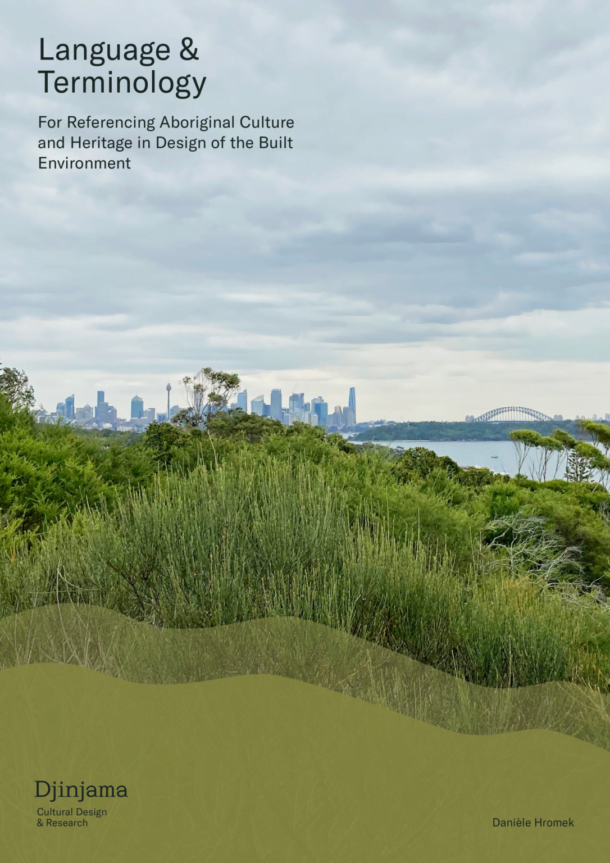
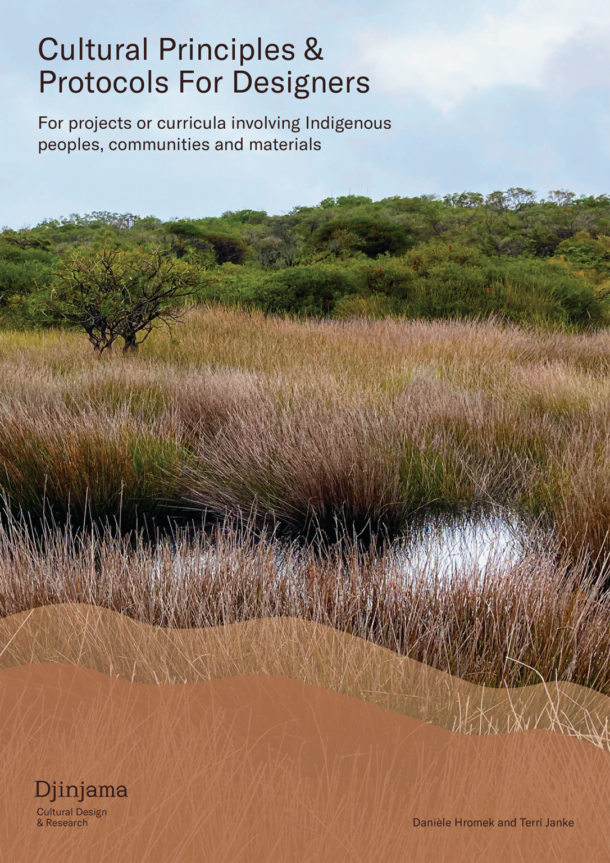
What can Non-Indigenous Designers Do?
Edited by Danièle Hromek, Architecture Australia (July / August 2023)
This dossier outlines 14 principles to support those learning how to design with Country. Each principle is discussed by a different First Nations contributor. For a discussion of the dossier, see the “Join our Circle”, the Deadly Djurumin Yarn with Danièle Hromek and Georgia Birks.
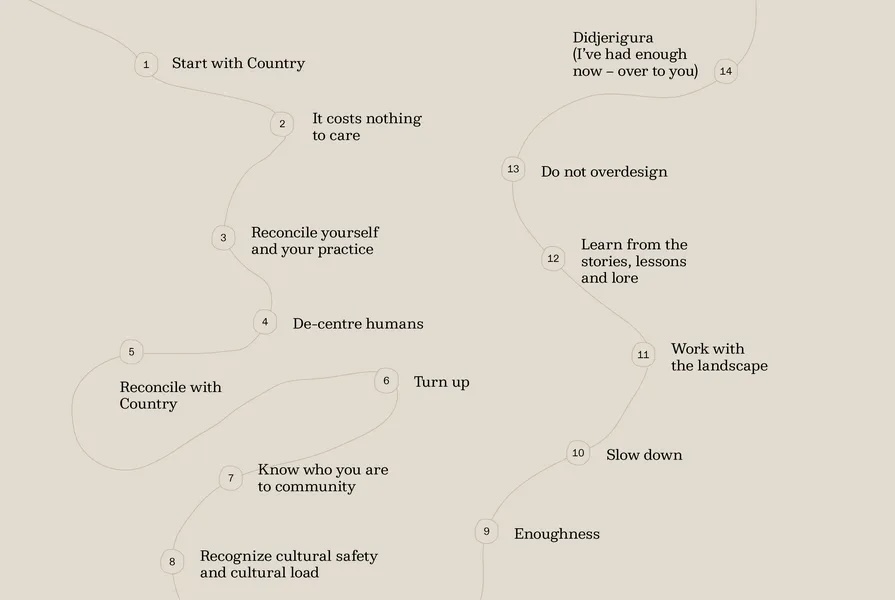
Indigenizing Practice
A long-running series of excellent and wide-ranging articles from Architecture Australia, published online on ArchitectureAU.
Blakitecture
Audio recordings of the Blakitecture sessions at the MPavilion, curated by Sarah Lynn Rees. These are available via the annual MPavilion podcast libraries.
20221/23 sessions, 2021 sessions, 2020 sessions, 2014–2019 sessions.




Aboriginal architecture
Gunyah Goondie + Wurley: the Aboriginal architecture of Australia
Paul Memmott (University of Qld Press, 2007)
A definitive guide to Australian Indigenous architecture. This large volume explores the range and complexity of Indigenous-designed structures and spaces, from minimalist shelters to semi-permanent houses and villages, debunking false perceptions of early Aboriginal constructions and settlements. The result of decades of research and field work by the author, this edition also includes contemporary Indigenous architectural practices and a new Foreword by Indigenous leader Marcia Langton AO.

First Knowledges Design: Building on Country
Alison Page and Paul Memmott (Thames and Hudson, 2021)
Alison Page and Paul Memmott explore how design principles of sophisticated function, sustainability and storytelling, refined over many millennia, are now being applied to contemporary practices. First Knowledges Design: Building on Country issues a challenge for a new Australian design ethos, one that truly responds to the essence of Country and its people. This book is is a collaboration between Indigenous and non-Indigenous writers and editors; the series is edited by Margo Neale, senior Indigenous curator at the National Museum of Australia.
The Handbook of Contemporary Indigenous Architecture
Edited by Elizabeth Grant, Kelly Greenop, Albert L. Refiti and Daniel J. Glenn (Springer, 2018)
This Handbook provides a comprehensive international overview of significant contemporary Indigenous architecture, practice and discourse – in over 950 pages with almost 50 contributors. Contributors include scholars and established and emerging Indigenous authors and practitioners from Australia, Aotearoa New Zealand, the Pacific Islands, Canada, USA and other countries. The book captures the breadth and depth of contemporary work in the field, establishes the historical and present context of the work, and highlights important future directions for research and practice. Topics include Indigenous placemaking, identity, cultural regeneration and Indigenous knowledges. This is an expensive volume – head to a university library near you!
Cultural competence and reconciliation
Aboriginal Cultural Inclusion Training
This NSW Tafe online course gives participants a deeper understanding and respect for Aboriginal and Torres Strait Islander cultures. The course aims to promote and foster positive behavioural change in the workplace, while giving learners the ability to directly apply the knowledge into their lives and community. Topics include understanding racism, its effects and how to be a part of the solution; Aboriginal identity; Aboriginal culture and what makes it so unique; the impacts of socio-political issues on Aboriginal and Torres Strait Islander communities; and how to engage meaningfully with Aboriginal and Torres Strait Islander communities. The online course is delivered over 4–6 hours and is available over a 12-week period. (online, $110)
Cultural Competence – Aboriginal Sydney
This Sydney University online course explores some of the key themes and capabilities of cultural competence by exploring Aboriginal experiences and narratives of Sydney. Sydney is a city rich in diverse pre-colonial, colonial and contemporary sites of significance to Aboriginal peoples. Too often though our perceptions about Aboriginal peoples consign them to an ancient past or perpetuates stereotypical imaginations that Aboriginal peoples live in remote communities. The Aboriginal presence in the city is often invisible to non-Aboriginal eyes. This course aims to bring to light marginalised narratives of Aboriginal presence in this space. To understand hidden and marginalised narratives and experiences it is necessary to develop cultural competence capabilities. Course learning outcomes include: 1. Develop knowledge about cultural competence capabilities; 2. Develop a deeper and multi-layered knowledge and understanding about Aboriginal peoples, cultures and places in Sydney; and 3. Develop a greater understanding of how history, cultures and places are represented, contested and interpreted and how that relates to their own context. (with/without certificate $70/free)
Uluru Statement to the Heart
This extensive website features the Uluru Statement to the Heart and how it came to be, resources, short courses and advice on how to take action, as well as detailed histories including sections on First Nations Law, Invasion, Resistance, Mourning, Activism, Land Rights and Makarrata (Treaty). The Uluru Dialogue represents the cultural authority of the Uluru Statement from the Heart and leads community education on the Uluru Statement’s reforms of Voice, Treaty and Truth. The Uluru Dialogue is based at the Indigenous Law Centre, UNSW Sydney.
For information on The Voice, see our resource roundup.
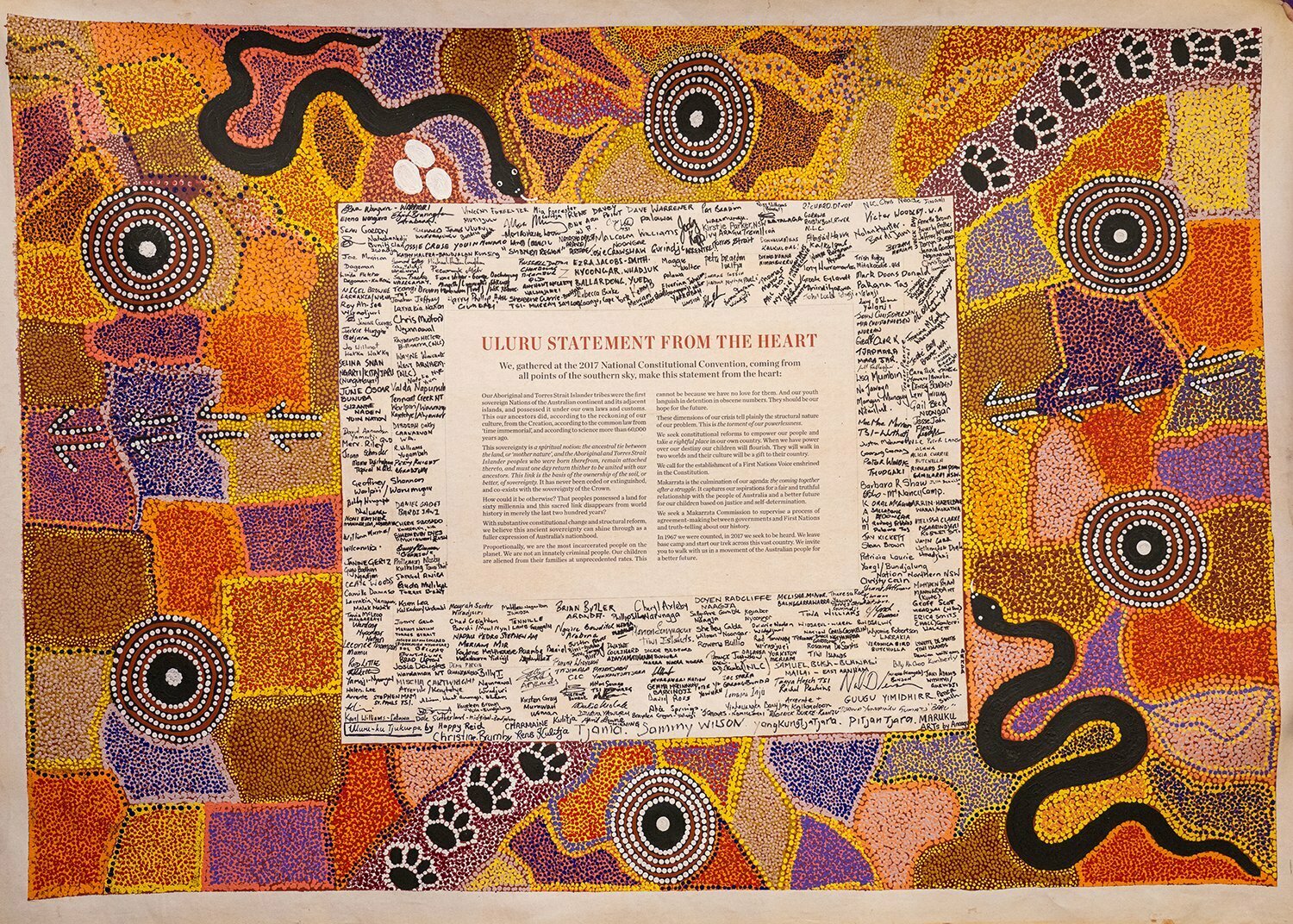
Reconciliation Australia
This independent not-for profit organisation promotes and facilitates reconciliation by building relationships, respect and trust between the wider Australian community and Aboriginal and Torres Strait Islander peoples. Work includes research, advocacy, policy and campaign support, and advice and guidance on developing Reconciliation Action Plans.
Cultural safety
Gari Yala (Speak the Truth)
This report from the Jumbunna Institute of Indigenous Education and Research and Diversity Council Australia shares insights with Australian employers about the experience of Aboriginal and Torres Strait Islander staff. The report is based on a survey of 1,033 Aboriginal and/or Torres Strait Islander workers across Australia and reveals some shocking realities about experiences of racism, the lack of cultural safety and identity strain experienced by Indigenous people across Australian workplaces. Key findings: 78% said it was important to identify as Indigenous within their workplace; 39% carry the burden of high cultural load, which comes in the form of extra work demands and the expectation to educate others; 38% reported being treated unfairly because of their Indigenous background sometimes, often or all the time; and 44% reported hearing racial slurs sometimes, often or all the time. Importantly, the report includes a list of 10 things organisations can do to centre Indigenous Australians’ voices to create workplace inclusion (see pages 18–20).
First Nations Cultural Safety Framework
This document helps build understanding of what cultural safety means. It explains what non-Indigenous people can do to create experiences of cultural safety, including examining the values and beliefs of the dominant culture, and critical self-reflection (with a comprehensive series of useful questions to consider). It outlines tasks and tactics for becoming an ally in anti-racism and cultural safety.
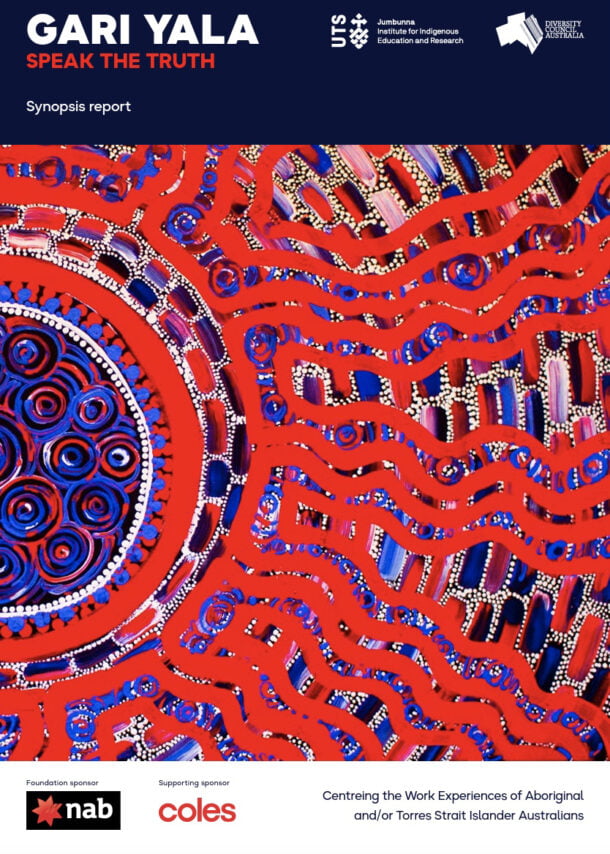
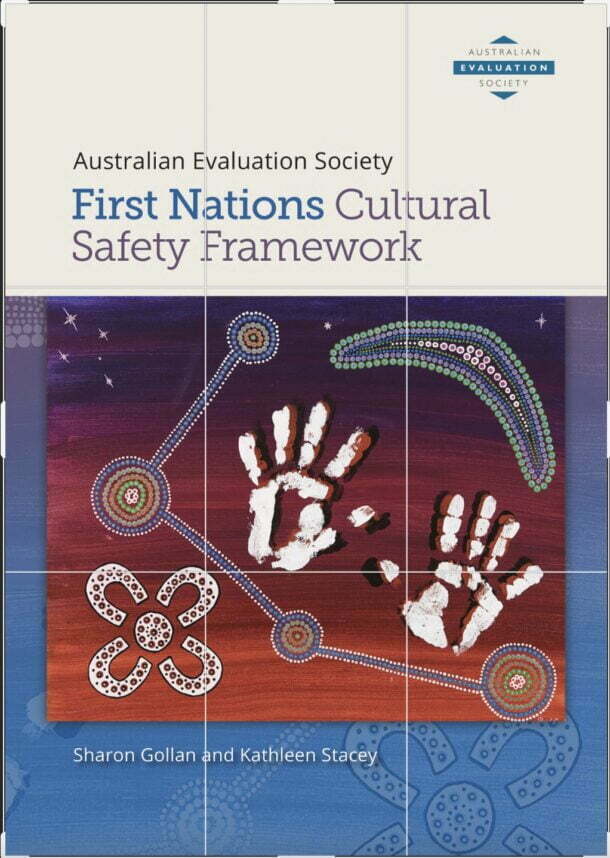
What is cultural safety and how do we design for it?
Dr Danièle Hromek, Architecture AU, 23 January 2023
The built environment can play a pivotal role in improving cultural safety for everyone. Exploring the concept from a First Nations perspective in this Architecture AU article, Danièle Hromek explains why it is imperative that designers understand cultural safety and consider it from project conception onwards. “The creation of culturally safe spaces goes beyond discussions concerning censorship and freedom of speech or expression. It occurs within the larger debate of cultural sovereignty and First Nations’ identities. To achieve cultural safety, we must question methods of and motivations for engagement. Space itself has been, and continues to be, a lens through which to view this debate in a productive and relevant manner. For this reason, built environment professionals are poised to contribute to the debate in ways that will have far-reaching cultural and spatial implications.”
Recognise cultural safety and cultural load
Carroll Go-Sam, Architecture AU, 18 July 2023
In this Architecture AU article, Carroll Go-Sam invites practitioners to learn what these terms mean, and how you can increase cultural safety and reduce cultural load in your work. “Some of us think positively about wokeness as awareness of racial injustice, while others view it negatively, as punishment for thinking the ‘wrong’ things. Take a breather! Let me say, First Nations people are not thought police and we don’t want you to be walking on eggshells. We all need be aware that cultural safety lies on a spectrum of racial prejudice and discrimination. If we are awake to lingering internal biases and practices arising out of privilege or enculturated values, we can make changes now to take a step in the right direction.” “Recognise cultural safety and cultural load” is one of the 14 principles of the “What can non-Indigenous architects do” dossier. See all the principles in this dossier.




















